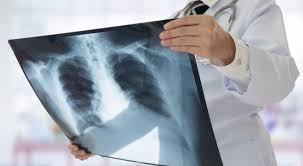Someone who
• has a new and persistent cough for more than 3 weeks.
• develops breathlessness
• has blood flecks in their phlegm should see a doctor and ask for a chest X-ray.
There is a current concern that many people with lung cancer are not getting a diagnosis early enough to get curative or effective treatment.
Reducing rates of lung cancer and improving diagnosis and treatment of people with lung cancer are priorities for Doncaster. To tackle the problem a social marketing initiative has been developed jointly by members of Doncaster health community and regional/national experts and has now been endorsed by Doncaster Primary Care Trust (PCT).
There are Two Major Types of Lung Cancer
1. Non-Small Cell Cancers
Non-small cell cancers include squamous cell carcinoma (tumor), adenocarcinoma and large cell carcinoma. Bronchioloalveolar cell is a subtype of adenocarcinoma and typically treated in a similar way.
Adenocarcinoma, the most common type of lung cancer, is usually located on the outer surface of the lungs (periphery) and can spread to lymph glands, the bloodstream and other organs. Squamous cell carcinoma may be found in the lining of the large bronchi (air passages) or in the periphery of the lung. Large cell carcinoma usually occurs in the periphery.
2. Small Cell Cancers
Small cell lung cancer usually develops in the central areas of the lung. It can spread aggressively and occurs almost exclusively in current or former smokers. This cell type has the strongest association with smoking. Read about small cell cancer treatment.
Minimally Invasive Surgery for Lung Cancer at World Class Hospitals in India
Minimally invasive surgical techniques have been developed to diagnose and treat lung cancer. These procedures are performed with the use of a video camera that is inserted through a small 3 inch incision of the chest. This enables the surgeon to clearly see the tissue being operated on without having to make a large incision in the chest and spreading the ribs . The minimally invasive technique can provide a more accurate surgery with less recovery time, less risk of infection, less bleeding and less discomfort than the traditional procedure.
Benefits of Minimally Invasive Procedures
Not only do these procedures usually provide equivalent outcomes to traditional “open” surgery (which sometimes require a large incision), but minimally invasive procedures (using small incisions) may offer significant benefits as well:
• Quicker Recovery – Since a minimally invasive procedure requires smaller incisions than conventional surgery (usually about the diameter of a dime), your body may heal much faster.
• Shorter Hospital Stays – Minimally invasive procedures help get you out of the hospital and back to your life sooner than conventional surgery.
• Less scarring – Most incisions are so small that it’s hard to even notice them after the incisions have healed.
• Less pain – Because these procedures are less invasive than conventional surgery, there is typically less pain involved.
To know more about Lung Cancer Treatment in India please visit this link : https://safemedtrip.com/medical-services/cancer-treatment-in-india/lung-cancer-treatment-in-india.html

 Click to WhatsApp
Click to WhatsApp +91-9899993637
+91-9899993637





